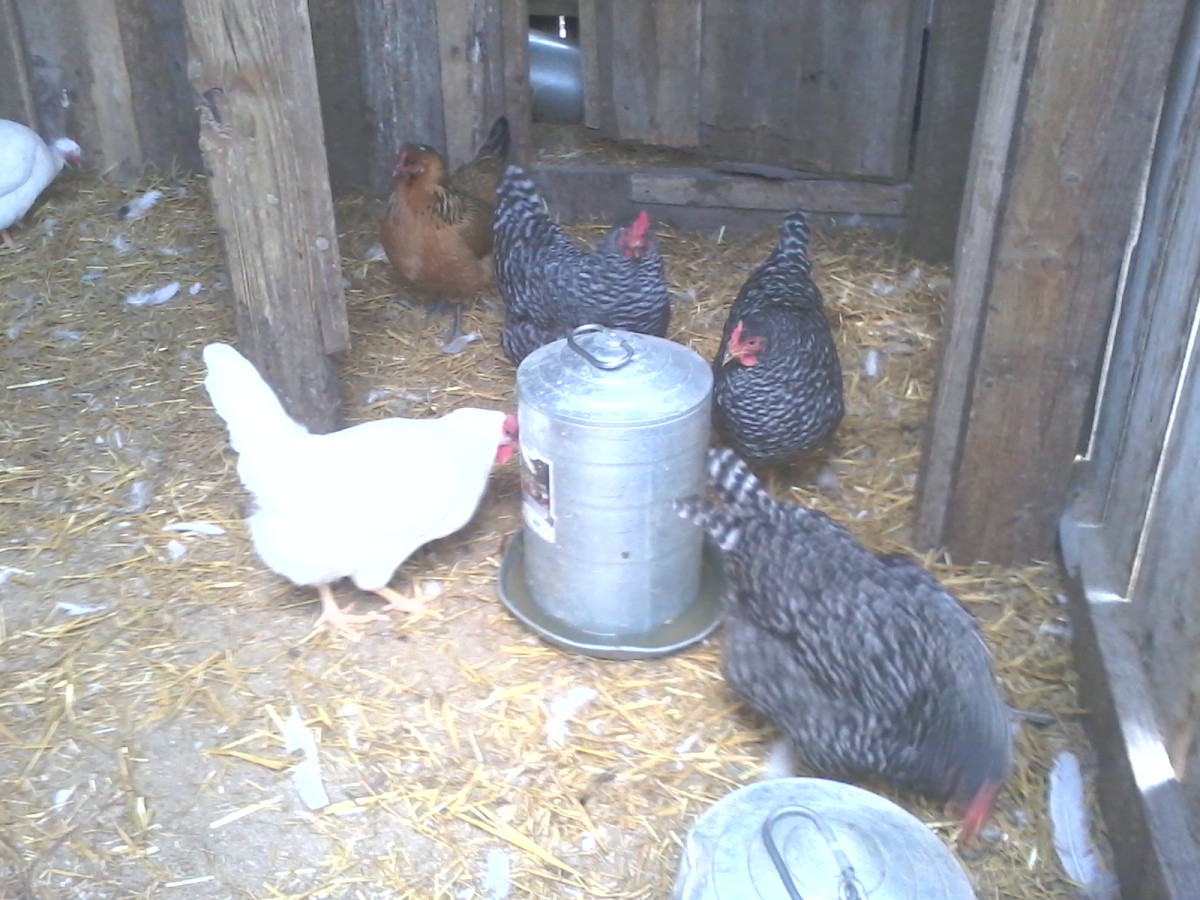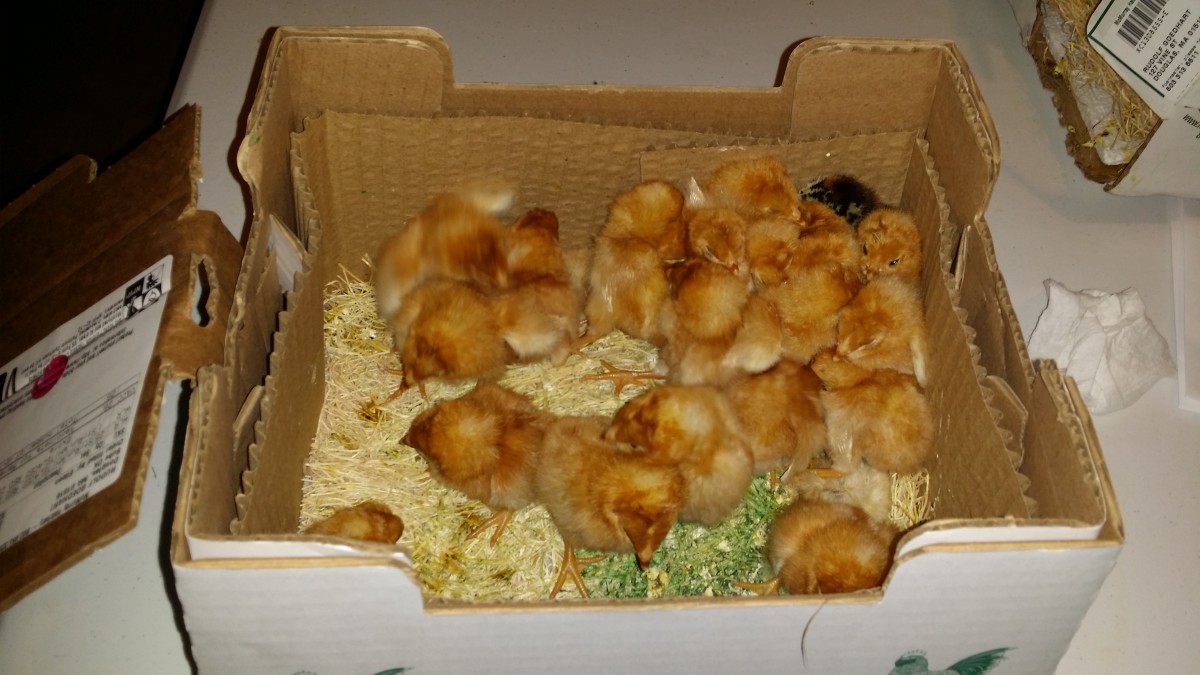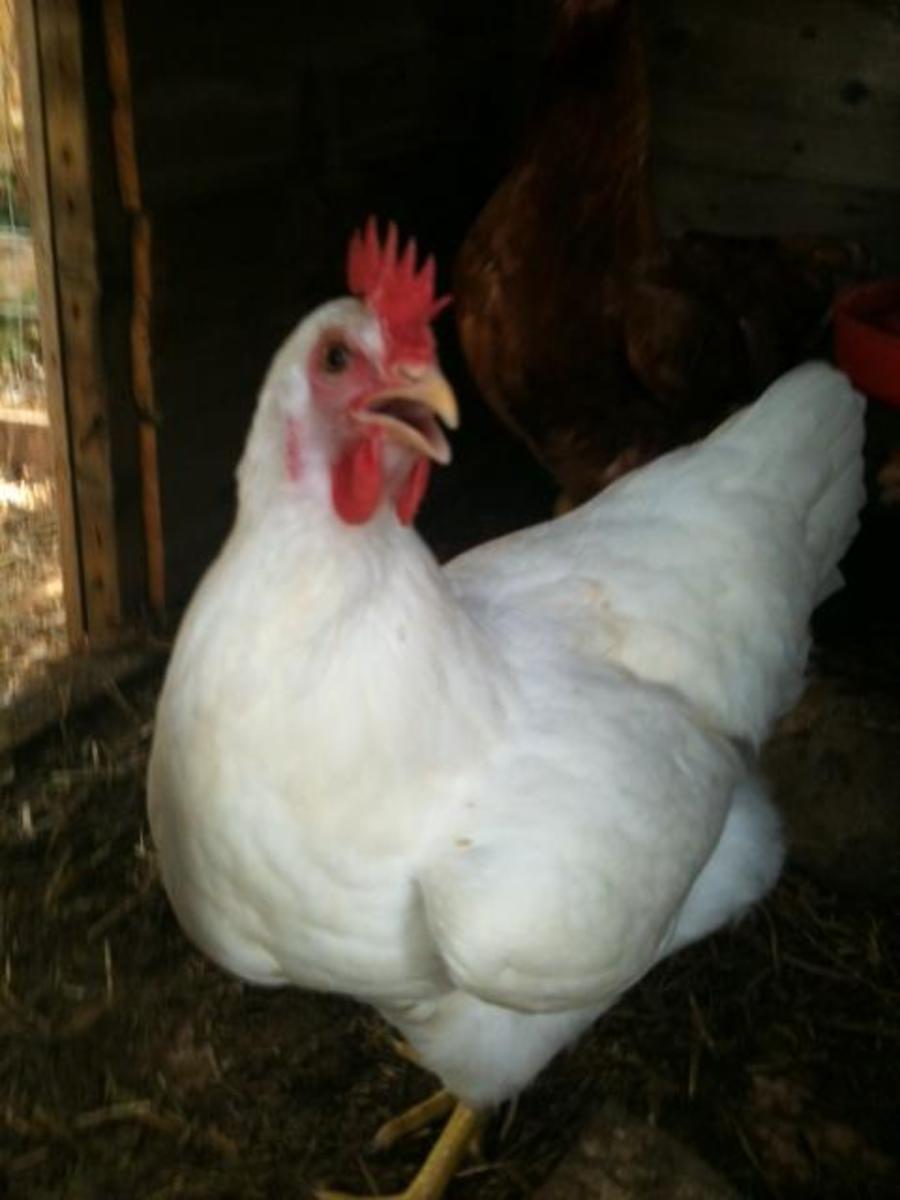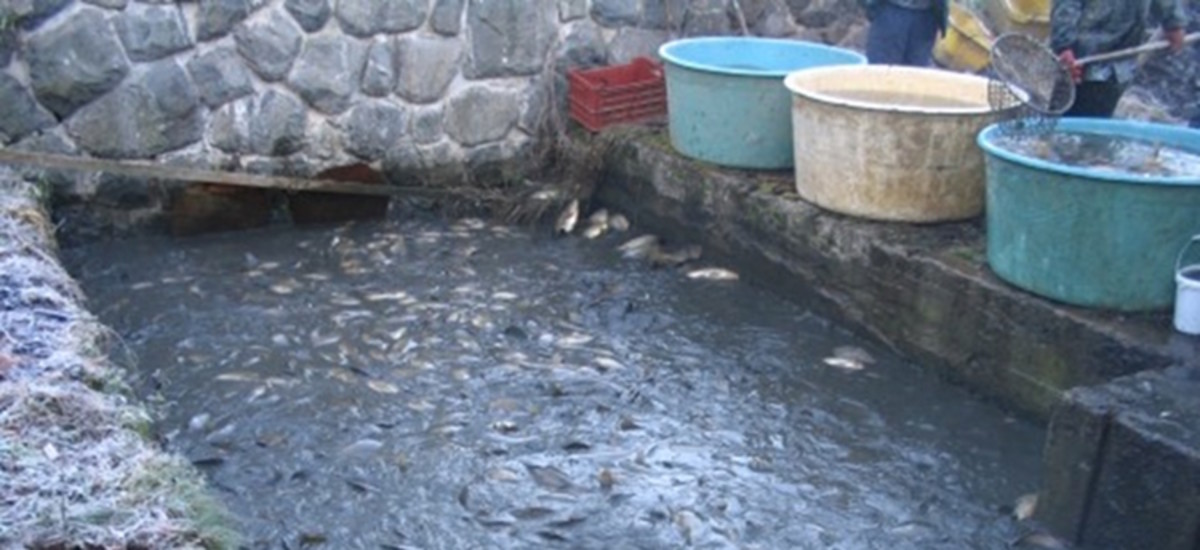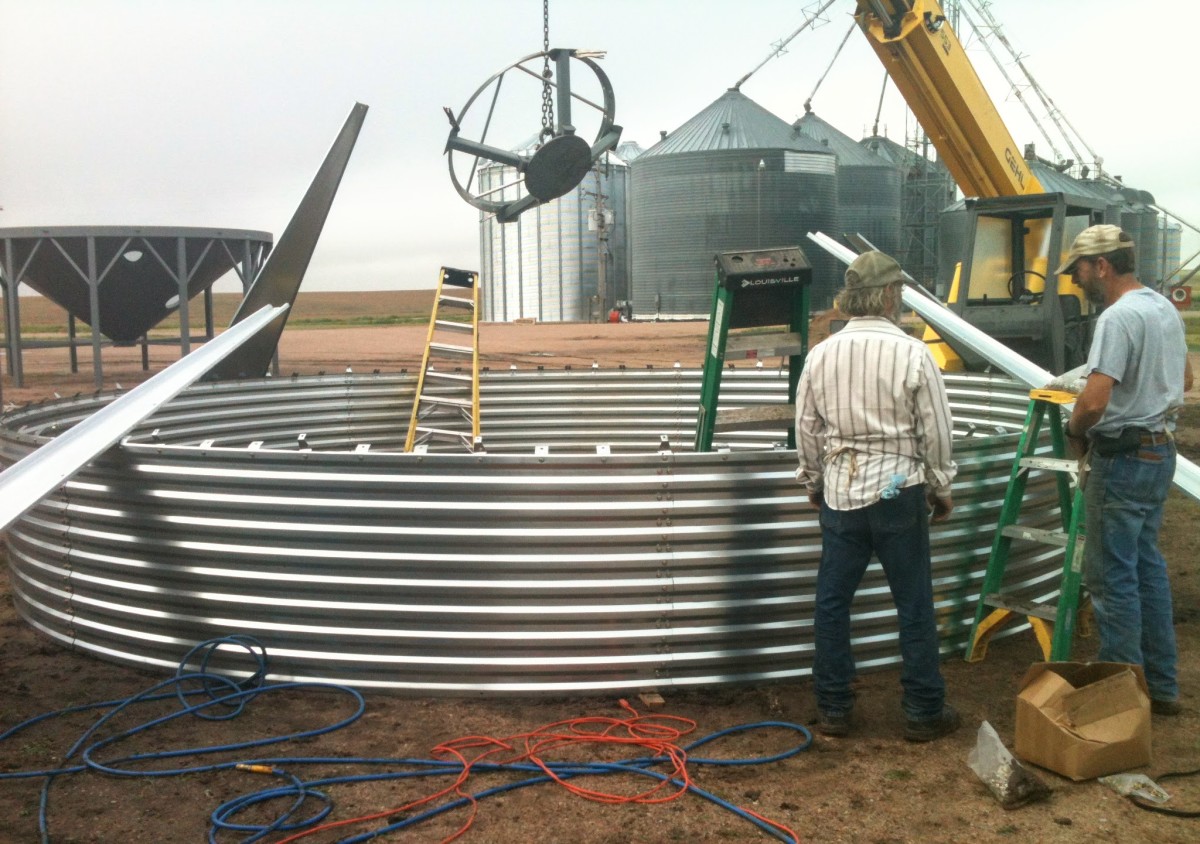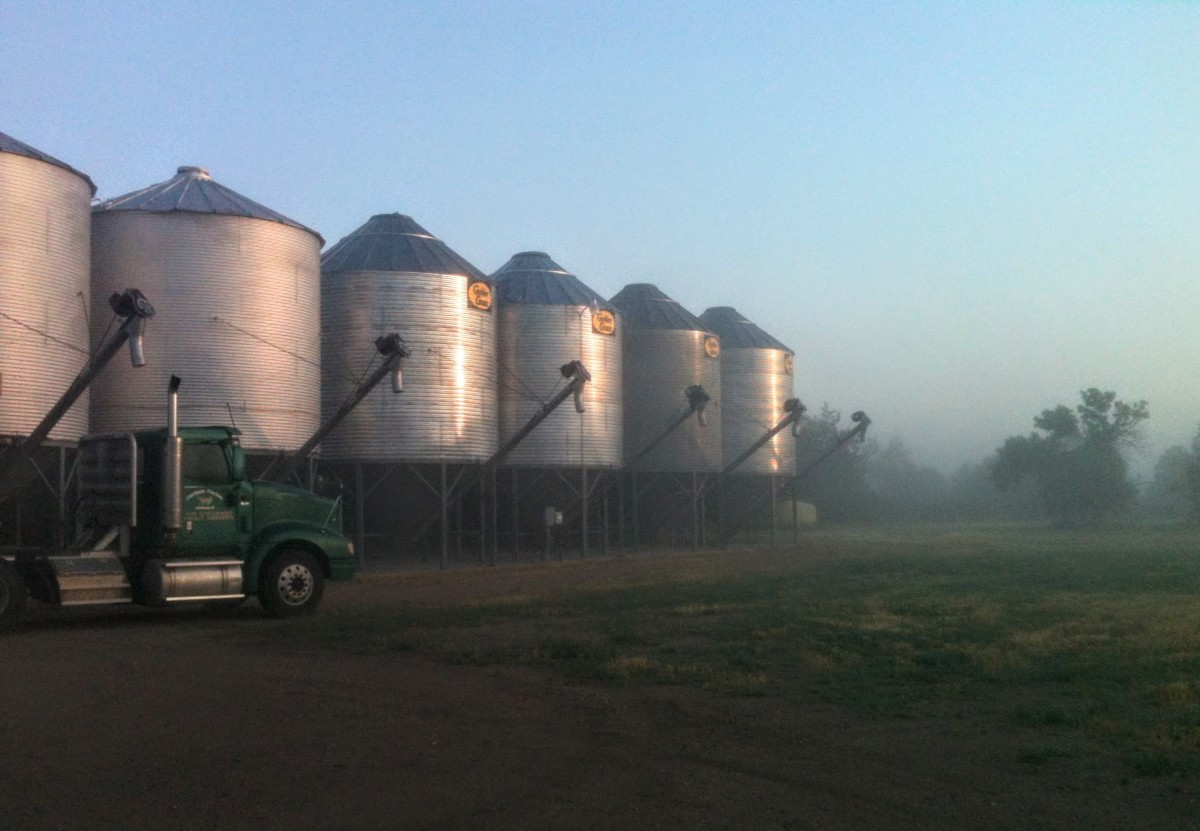How to Set Up the Brooder for Baby Chicks
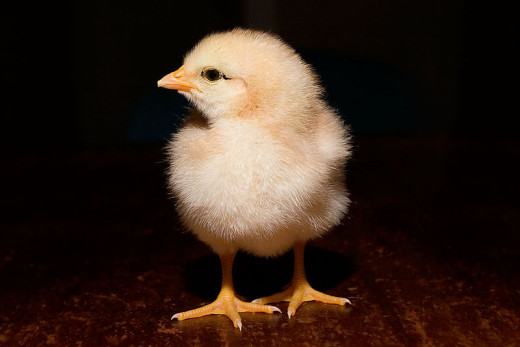
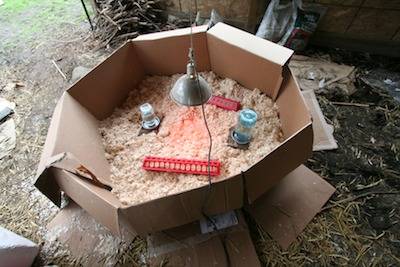
How To Set Up A Brooder For Baby Chicks
You should know that keeping and raising baby chicks will be a full time job until they are feathered out and you can let them mingle with your other chickens. If they are your first chickens you need to keep them under a screen box in the yard until they are fully feathered and you know they can look after themselves. Ideally you should order 95 percent pullets so you'll end up with a few roosters. Female chickens that have not yet laid are called pullets. If you order 25 baby chickens you should end up with 3 - 5 roosters.
Once you can tell what they are leave one rooster with the pullets and separate the other roosters out into their own cage. In case you're wondering a screen box is simply a wooden frame about eight feet long and six feet wide. Mine have a couple of built in roosts and a top access door. There is no bottom in the screen box. I've got two hand holds on each end of mine so they can be picked up and moved easily. I fasten a canvas tarp on top to give the chickens shelter from the weather and the sun. You can raise the roosters you don't need out to frying size in their own screen box. Then you can kill and clean them and cook them right away or put them in the freezer for later. With a few hens 7 - 21 you don't need but one rooster. If you have two or more they are going to fight.
Washing Hands Is Important
You want to be sure to wash your hands anytime you are going to touch your baby chicks or grown chickens. Then when you finish wash your hands again. You should wash your hands to the elbow. You should also on a regular basis wash your watererers, feeder, and anything else you use with your chickens on a regular basis with soap and water. Be sure to rinse anything you use clean before you put it back in with your chicks. Ideally if you have a lot of chickens or a chicken coop you should buy a box of shoe coverings and wear them when you go around your birds both to keep your shoes or boots clean and to help prevent the spread of disease.
Keeping Everything Clean Is Very Important
Most people don't realize how important that everything stays very clean. You need to change any water every three to four days and you need make sure to change the paper in your brooder under your chicks at least every other day. Don't let things get visibly dirty. If your smelling a strong smell of manure your doing something wrong. Remove any waste including old straw to a out of the way area and allow it to rot naturally to use on your vegetable garden. When you change the straw in the brooder add it to your manure pile also. The manure and other waste products will need to rot for 5 - 7 years before you use it on your vegetable garden. It must be very well rotted or it will burn your vegetables up.
Old Equipment. Be Sure To Clean It Very Well.
Its perfectly alright to use an old brooder you've picked up at a farm sale or from someone that no longer needs it. Before you use it you'll want to use a soap and water solution with bleach in it so you'll be sure to get your old brooder sanitized and very clean. Buy a automatic waterer if you can to make sure
Setting Up A Homemade Brooder
You can set up a homemade brooder for your baby chicks. You should use the water jars like in the photo above so they can get water with out being able to get in the water. You'll want a feeder like the long red feeder in the photo. It has little compartment dividers to keep them from clumping up together and smothering each other. You want the light to hang down in a metal reflector to give your babies the heat they need. Put straw in the bottom and change it if you think it starts getting dirty. It will need to be changed about once a week at the very least. You want the sides high enough that your babies can't get out.
You need to set your homemade brooder in an outdoor shed or building that can be heated. You can use an electric space heater to heat a small room. Don't use kerosene or you may kill your chicks with the fumes. You also want to make sure that the room is rodent and cat proof. The room needs to be able to be closed so no rodent, cat or other predator can get in. In the warmer spring months and the summer you'll also need to worry about snakes. Fill up even the smallest holes with steel wool and plaster to keep out rats and snakes. If a rat or a snake can get its head through a hole they will get in. Check under everything to make sure there are no holes you don't know about.
You can quite easily set up a homemade brooder and raise your baby chicks. You will want to keep them in the brooder until they are fully feathered. You can then move them to a screen box that you can move around so they are always on fresh ground where they can scratch and eat. You can later move them to a coop or chicken tractor when they are four to five months old.
Sugar Water
For the first five days after I pick the babies up from the post office I give them sugar water to help them get a good start. You can make sugar water by mixing three tablespoons of regular white granulated sugar in each quart of water. After five days switch to just regular clean fresh water. Be sure to use water jars that have a very shallow drinking dish at the bottom. This way they will always have access to clean water and they won't fall in the water and drown.
Food
Keep your food dish or food dishes full of chick starter feed and be sure to clean these thoroughly if you see them getting dirty with droppings or dirt.
Your Heat Lamp
I use a 150 watt heat lamp that I can raise or lower as needed. I keep a small round thermometer that I can lay down in the floor of the brooder so I can check the temperature as needed. I usually lower the light to keep the chicks at 90 - 95 degrees for the first week and then I slowly raise the light a few inches a week until the temperature in the brooder is staying at 70 - 72 degrees all the time. By this time they should be getting fully feathered and ready to go outside. Once you move them outside into a screen box or chicken tractor be sure to cover the top and the side facing where your rain usually comes from covered with a tarp to keep the rain and sun off of them. Be sure that your just arrived chicks can get away from the heat lamp if they need to.
When They First Arrive
When they first arrive check out each chick to be sure none of them have feces built up around their anus. If they do carefully wash the little bird clean with a warm washcloth. Put that chick somewhere it will stay warm and get dry before you put it in with the others. I always order my chicks with their beaks clipped. You should also because this helps out a lot especially later when they are grown and can injure each other when pecking. I hold each one carefully and dip their beak in the water as I set them in the brooder. This lets them know exactly where the water is. I also check on them about every two hours I am awake for the first three days. Sometimes more often than that. You need to check the temperature each time you check on them to make sure your keeping it at or around 90 - 95. Any warmer than that and you can kill them.
You want to keep them warm and provide them with plenty of food and fresh water. You also need to make sure that everything stays very clean. If it smells dirty even if it doesn't look dirty change the straw and keep everything clean. You'll be rewarded with healthy chicks that will grow up quickly and provide you with lots of farm fresh eggs and meat. Its real important that you use feeders like in the photo so your chicks will be kept out of their food and each one can get up to the feed and eat. Right now you want them eating and drinking water so they will get feathered out and you can move on to the next step towards having a coop or chicken tractor full of happy hens laying delicious healthy eggs for you.
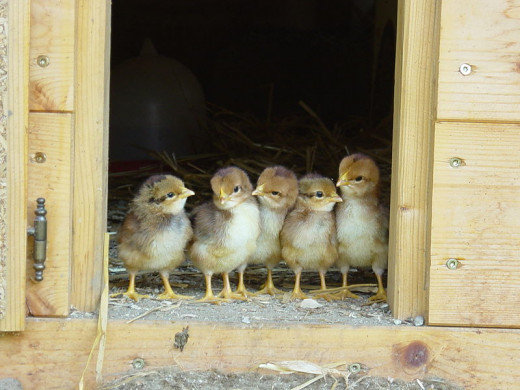
More Facts About Baby Chicks
Once you can let your mother hens raise their own babies. If you'll provide food, water, and a clean place to live she will do a much better job than you ever will. But if you have babies to start with you'll have to raise them up so that one day you will have a nice flock of birds raising their own young.
If you already have adult fowl that are going to be around your baby chicks be sure to put the new chickens you just raised under a screen box out in the barnyard before you release them to be sure they are going to be accepted as part of the flock. Watch carefully before you release them to see how the ones in the yard already react to the ones under the screen box.
When your raising baby chicks handle them as little as possible. If you handle them a lot they will often die. So never handle them any more than is necessary.
I bet you didn't know that baby chicks can breathe before they are ever born. An egg is porous with holes that they breathe oxygen through. You may look at an egg and think its solid but its not. Believe it or not but each egg has about 8000 tiny pores that the baby growing inside breathes through.
You should always keep in mind that baby chicks are very small and they can squeeze into very small places. Be sure to fill up any hole that a baby chick can get into. Keep in mind that predators can come in through those same holes.
Remember if you order your baby chicks from a hatchery to check them out carefully when they arrive. Be sure that your ready to go pick them up at your local post office. I like to buy mine at my local farm and garden center in the spring. Shipped ones often arrive stressed but if you want a special breed you may have to order them.
When you purchase them just make sure that you have the number your supposed to have and that they are all healthy and happy. Have your commercially bought or homemade brooder set up and ready for them when they arrive. And remember to check the butt of each baby chick daily. If feces are present use a warm washcloth to remove them. You can't let the feces block them up or they won't be able to poop and they will die. You don't want this. You'll also want to be sure to keep them warm. And provide them with chick starter feed and clean fresh water. Be sure to use jar watering devices so the babies can't fall in and drown.
I just simply love to watch that fluffy puffy little ball grow up into an adult rooster or pullet. Remember pullets are young hens and we of course all know what a rooster is. You don't need but one rooster for up to about twenty one hens. With just that one rooster around your eggs will be fertilized and hatch. Eggs take 21 days to hatch.
Thanks for reading my Hub Page. I do appreciate you being here and if you have any questions feel free to ask.

